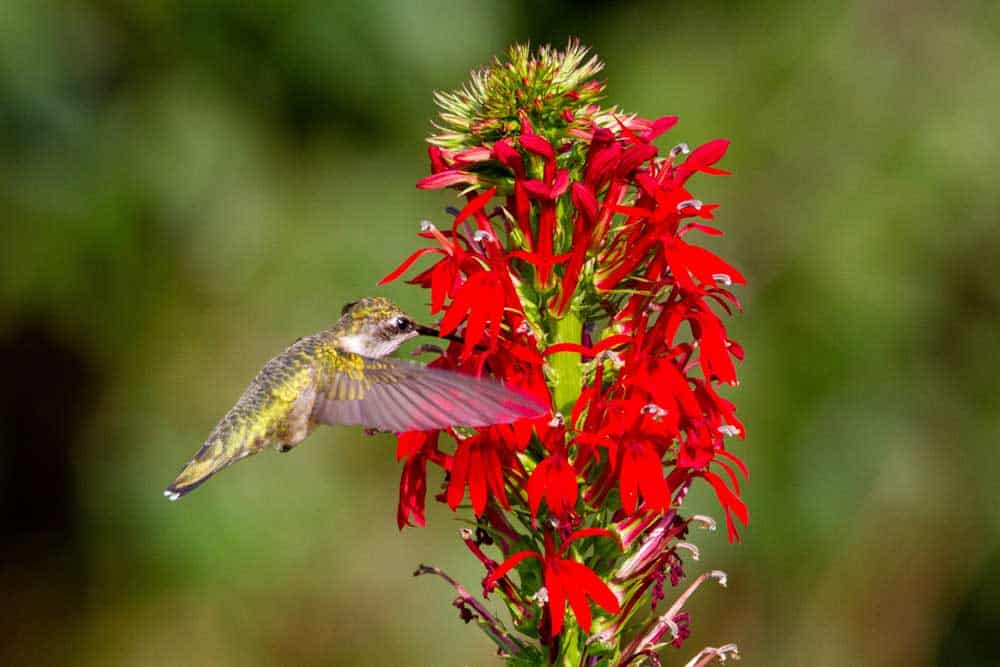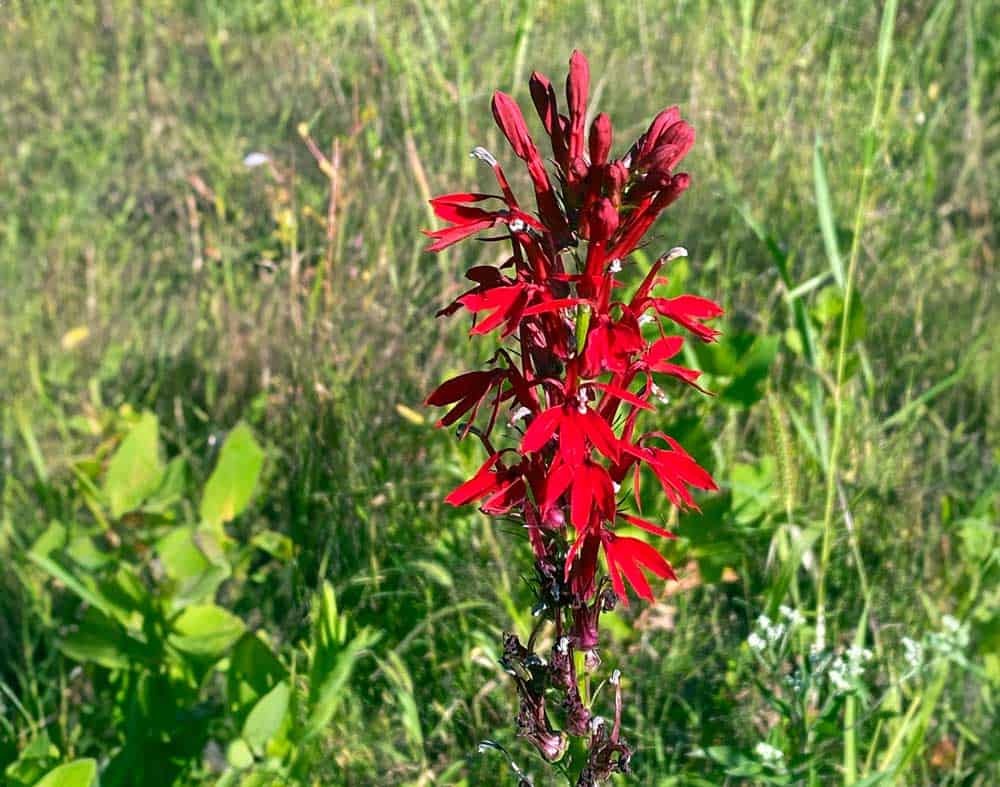Lobelia cardinalis, the cardinal flower (syn. L. fulgens), is a species of flowering plant in the bellflower family Campanulaceae native to the Americas, from southeastern Canada south through the eastern and southwestern United States, Mexico and Central America to northern Colombia. It is a striking perennial known for its vibrant red flowers that bloom from late summer into fall.

Its introduction to Europe in the early 1600s and the subsequent naming by Linnaeus after the botanist Matthias de L’Obel highlight its long-standing appeal and botanical interest. This plant is not only valued for its ornamental qualities but also plays a crucial role in ecosystems, attracting a variety of pollinators and serving as a food source for wildlife. The tubular shape of the flowers is suited to the feeding habits of hummingbirds, whose long bills can reach the nectar at the base of the tube. As the hummingbirds feed, they inadvertently transfer pollen from one flower to another, aiding in the plant’s reproductive process.
Lobelia cardinalis can reach up to 4 feet tall and thrives in moist environments like streambanks and swamps. Its leaves are long and broad, shaped like a lance or oval, with edges that are toothed. The plant stands out for its bright red flowers that are deeply lobed, measuring up to 4 cm across, and appear in upright clusters that can grow as tall as 28 inches during the summer to fall season. There are also white and pink flower variants. This plant is commonly found near streams, springs, swamps, and wooded areas. It’s related to Lobelia inflata and Lobelia siphilitica, which are also part of the Eastern United States’ flora. All three species share a distinctive lip-shaped petal and secrete a milky liquid. Unlike its relatives, Lobelia cardinalis, with its red flowers, attracts the ruby-throated hummingbird for pollination, whereas Lobelia siphilitica, which has blue flowers, is mainly pollinated by bees.
Historically the Zuni people use this plant as an ingredient of “schumaakwe cakes” and used it externally for rheumatism and swelling. The Penobscot people smoked the dried leaves as a substitute for tobacco.
Growth and Care
Cardinal flowers are perennials, meaning they can return year after year in the right conditions, though they may also be short-lived. They prefer partially shaded to sunny locations and thrive in moist, fertile soil. Despite their preference for wet conditions, they can tolerate short periods of dryness once established.
In cultivation L. cardinalis grows best in rich, deep soil which remains reliably moist year-round. This plant is easily propagated by seed and dividing out the young plants which form around the older mature plants each year. They prefer partial shade.

Value to Gardeners
Gardeners treasure the cardinal flower for several reasons. Its bright red flowers provide a vivid splash of color in late summer when many other plants have finished blooming, making it a valuable addition to garden landscapes. The plant thrives in a variety of habitats, including stream banks and swamps, and can be used in garden settings that mimic these natural environments. Its ability to attract hummingbirds is particularly noted, adding dynamic wildlife interactions to the garden.
Role in Healthy Ecosystems
The cardinal flower contributes to the health of ecosystems in several ways. It serves as a nectar source for a variety of pollinators, which is critical for the pollination of many plants and the overall functioning of ecosystems. The plant’s preference for wetland habitats means it can play a role in stabilizing stream banks and reducing erosion. Its presence in these environments also supports the biodiversity of aquatic and semi-aquatic ecosystems.
Relationships with Pollinators, Birds, and Wildlife
The cardinal flower has a special relationship with hummingbirds, which are attracted to its bright red flowers. Hummingbirds play a key role in the plant’s pollination, as the flower’s structure is well-suited to the feeding habits of these birds. In addition to hummingbirds, the Cardinal Flower is visited by various insects, including butterflies and bees, which are attracted to its nectar. These interactions highlight the plant’s role in supporting pollinator populations and contributing to the pollination of other plants within its ecosystem.
The cardinal flower’s seeds and foliage may provide food for certain bird species and small mammals. The plant’s role in supporting a diverse range of wildlife further underscores its importance in healthy ecosystems. These roles make the plant a significant value to gardeners, ecosystems, and a variety of wildlife.
Sources: Wikipedia
